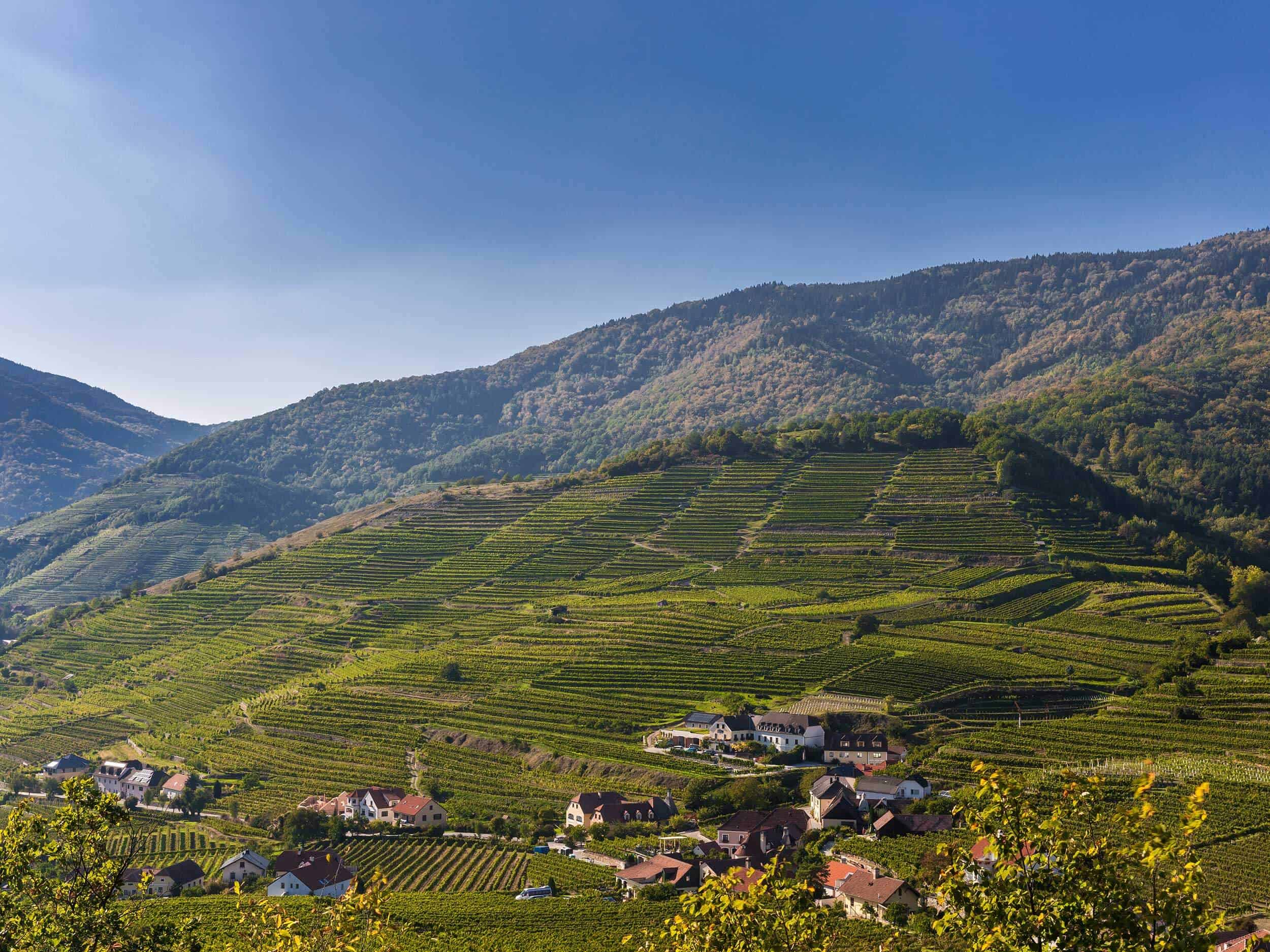Setzberg
The Setzberg must be divided into a large eastern half and a smaller western half. The probably most valuable dry grassland of the Wachau region lies between the two halves, which is also a designated natural monument.
In geological terms, the mountain unites several types of metamorphic rock: paragneiss, Spitzer granodiorite gneiss, marble, silicate marble, calc-silicate gneiss and scattered patches of loess on the east slope. In terms of the surface area, the variable paragneiss plays the most important role. It is therefore no surprise that the paragneisses occur in different forms on the Spitz and Laaben sides.
The location also represents a climatic divide separating the vineyards of Spitz from those of the Spitzer Graben. The wines produced on the two sides of the mountain differ accordingly.
Town: Spitz
First mentioned in year: 1243
Terraced vineyard
Aspect: W-SO
Slope gradient: up to 73%
Altitude: 227-380m
Soil profile
The profile from the Laaben side shows a sandy, stony topsoil on top of compact paragneiss interspersed with quartz veins. The rock is acidic, so both the fine earth and the cracks and joints are not influenced by loess and carbonates. The grapes grown here yield Rieslings rich in finesse.


